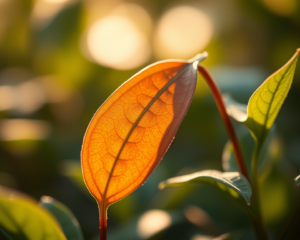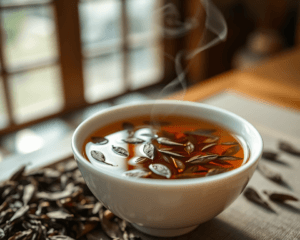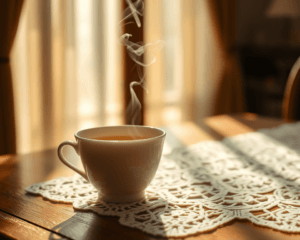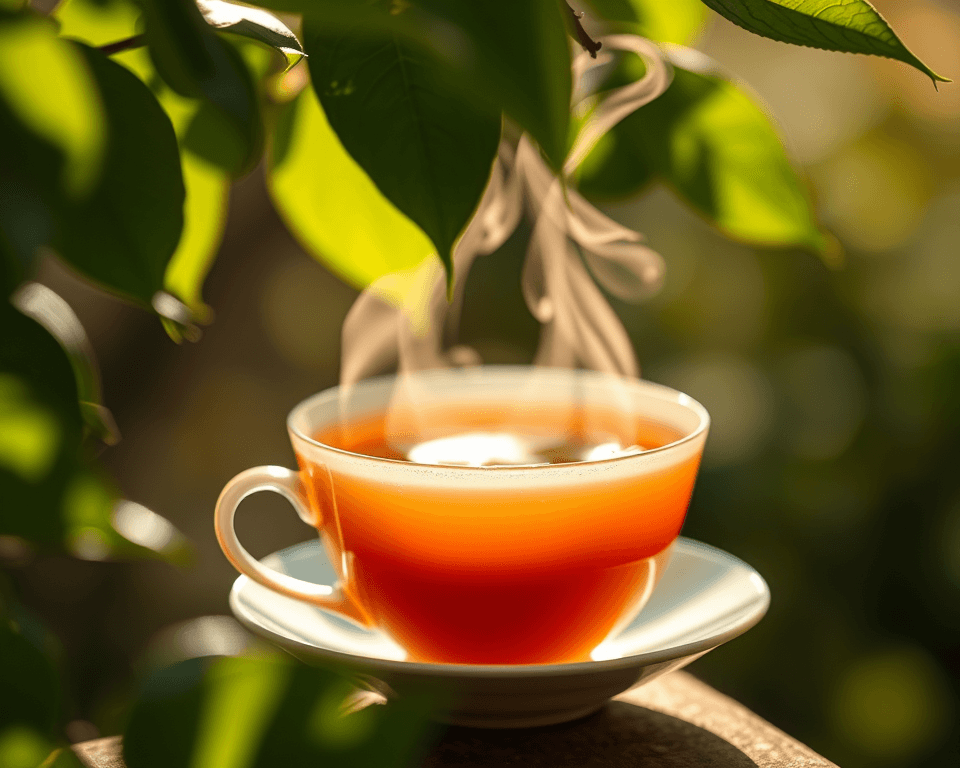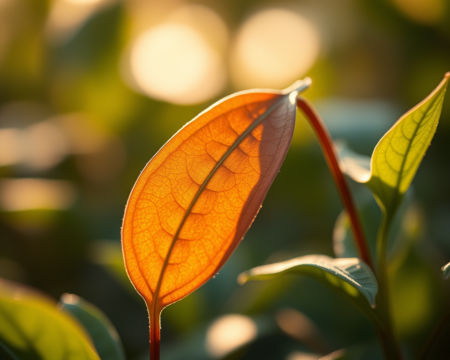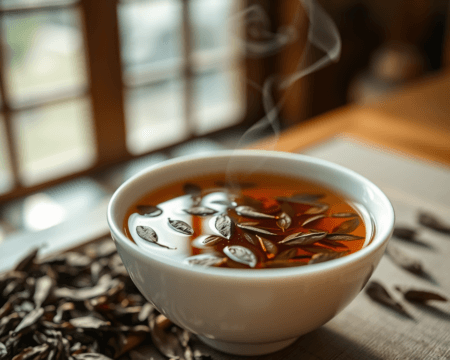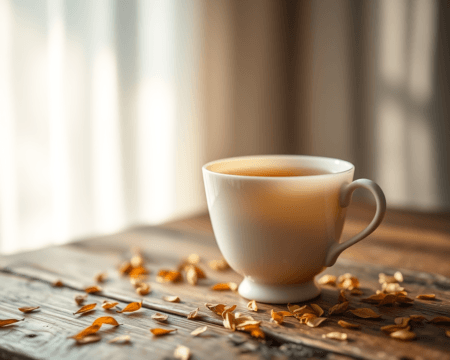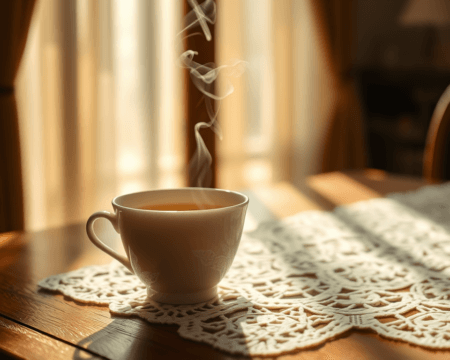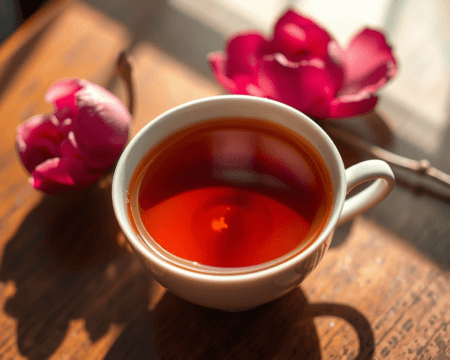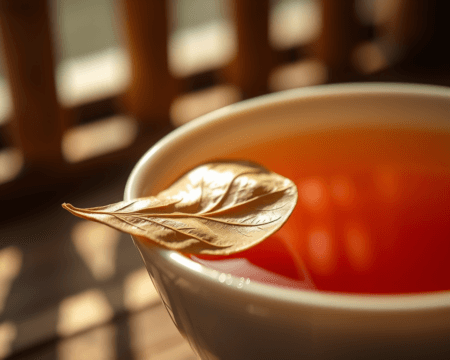Oolong tea is where the magic happens in the tea world; it’s not fully fermented like black tea but also not as minimally processed as green tea. It sits in this fascinating middle ground, giving us unique flavor profiles and a hearty aroma that can’t be rivaled. If you’re looking to unlock the secrets of this semi-fermented treasure, you’ve landed in the right place. Let’s jump in and explore not just how to brew up this exquisite tea, but also the rich history, the equipment you’ll need, and the nuances that make oolong tea stand out.
Key Takeaways
- Oolong tea is a semi-fermented tea with distinct flavor profiles and robust health benefits.
- The brewing process involves selecting the right GRADE of leaves, monitoring water temperature, and timing your steep perfectly.
- Utilizing high-quality equipment can dramatically improve your tea experience.
- Pairing oolong tea with the right foods enhances its unique flavors.
Introduction to Oolong Tea
What is Oolong Tea?
Imagine sipping on something that embodies centuries of tradition, complexity, and a bit of mystery—welcome to oolong tea! Defined as semi-fermented tea, this traditional Chinese delight sits comfortably between the bright freshness of green tea and the robust depth of black tea.
There are various oolong varieties like Tie Guan Yin and Da Hong Pao, each showcasing a different flare based on their terroir and production methods. The characteristics of oolong tea really shine through in every cup. These teas are often known for their floral aromas, sweet undertones, and an earthy richness that makes them palatable for just about anyone.
But beyond the taste, oolong tea packs a punch when it comes to health. It’s linked to benefits like improved metabolism and rich antioxidants. These aren’t just myths; they’re grounded in traditional tea culture that has cherished oolong for generations.
Historical Context and Cultural Significance
To get a complete picture, we gotta peek into the past. The origin of oolong tea is deeply rooted in the history of Chinese tea production, dating back to the Song Dynasty. You wouldn’t believe how oolong has played a role in cultural rituals and ceremonies across regions, reinforcing connections and creating community.
Regional variations play a crucial role in its significance. Whether it’s the traditional oolong production in Fujian or the competition in Taiwan, every sip tells a story. You might even find oolong tea at the center of lavish tea ceremonies, showcasing its importance in fostering social bonds. That’s right—this tea isn’t just for sipping; it’s a conversation starter and a bridge between past and present.
Ingredients and Equipment for Making Oolong Tea
Essential Ingredients Needed
You want to make a killer cup of oolong tea? First things first—focus on your ingredients, because the best brews start with high-quality tea leaves. Look for brands like Tea Vivre or Adagio Teas, which offer a variety of oolong choices.
Don’t skimp on the water selection either. Filtered water is your best bet—tap water might throw off your brew. Think about flavoring options, too. Sometimes, adding a splash of lemon or a hint of maple can elevate your experience.
Equipment Required for Brewing
Now let’s talk about what you need to get this show on the road. You might not need all the fancy gear, but let’s not kid ourselves—having the right equipment can make a world of difference.
A good quality teapot or tea infuser can do wonders. I’m a big fan of the Yixing teapots for their ability to retain heat and enhance flavor over time. For steeping, the Gaiwan, a traditional Chinese tea brewing vessel, is a slight edge that many tea enthusiasts swear by. Just imagine impressing your friends with authentic Chinese tea culture while sipping some oolong.
Step-by-Step Process of Making Oolong Tea
Preparing the Ingredients
Selecting the right leaves is crucial. You need to wash your tea briefly to awaken the flavors, then measure out the perfect amount—generally about 1-2 teaspoons per 8 ounces of water.
Don’t forget about oxidation. Each variety of oolong has a different oxidation level—some are around 20%, while others can hit up to 80%. This affects flavor, so understanding your specific tea leaves is key. Aim for water temperatures between 190°F to 205°F, depending on your specific oolong type. Too hot? You’ll scorch the leaves. Too cool? You’ll end up with a weak brew.
Brewing Oolong Tea
Alright, let’s get to the exciting part—brewing! Steeping time can vary greatly, but you typically want to aim for 3 to 5 minutes for that perfect infusion. Keep an eye on the clock, though, because over-steeping can lead to bitterness.
Remember the water-to-tea ratio we discussed? Stick with it closely. A good rule of thumb for oolong is about 1:50 for tea and water, but don’t hesitate to adjust based on personal preference. Try tasting notes as you go; experience is your best teacher in perfecting your brew. The beauty of oolong tea is that you can get multiple infusions; good oolong leaves can be steeped several times, giving you countless flavor dimensions as the leaves open up.
Serving Suggestions for Oolong Tea
You’ve brewed your perfect cup; now it’s time to serve it right. Presentation counts, folks! Use clear glass cups to showcase the colors, and serve it warm but not scalding. Pair it with food—light snacks like almond cookies or a simple cheese platter provide the ideal mid-afternoon pairing, enhancing those lovely floral notes.
Also, don’t forget to consider tea drinking etiquette. In many cultures, the way you serve and present tea matters just as much as the taste. Take a moment to appreciate it, and encourage your guests to do the same. You’ll turn a casual tea time into a mini-ceremony.
Comparison of Oolong Tea with Other Types of Tea
Comparing Oolong to Green and Black Tea
Let’s measure oolong up against green and black tea. Oolong blends flavor profiles and processing methods from both. It swings in between the grassiness of green tea and the maltiness of black tea; oolong offers an approachable balance that’s just right.
Will it provide more antioxidants? You bet! Oolong is rich in polyphenols, much like green tea, but with a different concentration that can boost metabolism more effectively than you might expect. These factors make it stand apart from the tea crowd.
Unique Production Methods of Oolong Tea
The unique production techniques really make oolong shine. The artisanal production process includes hand-roasting and rolling the leaves, which distinguishes it sharply from standard tea processing methods.
In different regions, you’ll find variations in techniques that dictate flavor—Taiwan’s high mountains yield floral, sweet oolongs, while the more robust Fujian varieties are known for their deep, roasted flavors. It’s a thrilling rabbit hole to go down if you want to immerse yourself more profoundly in the tea world.
Tips and Best Practices for Brewing Oolong Tea
Optimal Brewing Conditions
Let’s talk environment! Your brewing conditions can play a huge role in the outcome of your oolong tea. Water quality? Absolutely vital. If your water’s funky, your tea will taste funky. Use freshly filtered water each time you make tea, paying attention to the steeping time and serving temperature.
Another pro tip: keep your brewing tools clean. Residue from previous brews can alter the taste of your beloved oolong, so treat your equipment right to ensure every cup is delightful.
Environmental Impact of Oolong Tea Production
In this day and age, it’s essential to consider the environmental impact of your tea choices. Sustainability is a buzzword for good reason—how the tea is farmed, where it’s sourced from, and even climate effects on quality matter.
Look for brands that adhere to eco-friendly practices and ethical sourcing. You’ll not only enjoy a delicious cup of tea but also contribute to a positive impact on the tea cultivation landscape.
These little choices in your tea journey can lead to longer-term changes in the industry. So, next time you sip your carefully crafted cup of oolong, remember that it’s not just tea; you’re a part of a larger story.
Frequently Asked Questions
What is oolong tea, and how is it different from other types of tea?
Oolong tea is a partially fermented tea that falls between green and black tea in terms of oxidation. This unique processing gives it distinct flavor profiles and aromas, offering a diverse tasting experience that sets it apart from the more categorized green and black teas.
How should I prepare oolong tea for the best flavor?
To prepare oolong tea, start with high-quality loose leaves. Use water heated to around 190°F (88°C) for optimal extraction. Steep for 3 to 5 minutes, adjusting time for your preferred strength. Experiment with multiple infusions, as oolong leaves can offer rich flavors over several brews.
Can oolong tea help with weight loss?
Yes, oolong tea may aid in weight loss due to its potential to boost metabolism and fat oxidation. Incorporating it into a balanced diet and exercise routine can enhance these effects, but it’s not a magic solution for weight management on its own.
What food pairs well with oolong tea?
Oolong tea pairs beautifully with a variety of foods. Its floral and fruity notes complement dishes like grilled meats, seafood, and lightly flavored desserts. Experiment with different pairings to discover which flavors enhance your tea experience.
How does brewing temperature affect the taste of oolong tea?
Brewing temperature significantly impacts the flavor profile. Warmer water typically extracts bolder and more robust flavors, while cooler water can highlight subtle and nuanced notes. Adjusting the temperature allows you to customize your tea experience according to personal preferences.
Is it necessary to use high-quality equipment for brewing oolong tea?
While it’s possible to brew oolong tea with basic equipment, high-quality teapots and infusers can enhance the brewing process. They help maintain consistent temperatures and allow for better underwater circulation, ultimately improving flavor extraction and overall tea enjoyment.
How can I store oolong tea to maintain its freshness?
To maintain freshness, store oolong tea in an airtight container in a cool, dark place, away from moisture and strong odors. This prevents degradation of flavor and aroma, allowing you to enjoy the tea’s full potential over time.
Is there caffeine in oolong tea?
Yes, oolong tea contains caffeine, although the amount varies depending on factors like the type of leaves used and the brewing method. On average, oolong tea has about 30-50 mg of caffeine per 8 oz cup, which is lower than black tea but higher than green tea.
Can I reuse oolong tea leaves after brewing?
Absolutely! Oolong tea leaves are known for their multiple infusions. You can often steep the same leaves several times, with each infusion producing different flavors. Increase the steeping time slightly with each reuse to extract the full range of characteristics from the leaves.
